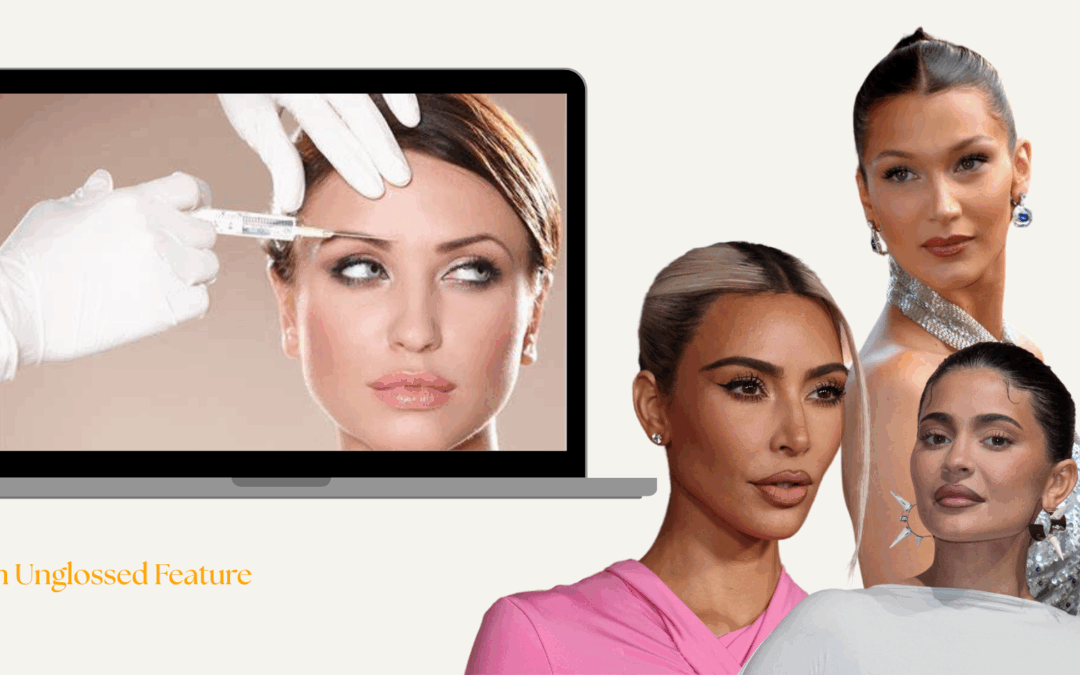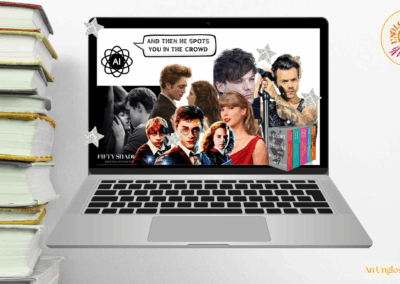As the fashion industry pivots away from inclusivity and back to size zero ideals, Unglossed unpacks how this trend reflects deeper systems of power. With insights from rising fashion voice Anya Anako, we explore how TikTok and the remnants of 2000s toxic diet culture reshape beauty standards under the guise of wellness.
The ideal body type has changed again. One moment the ‘BBL’ look was dominating our feeds and shaping surgical trends. Now, thin is back, and you don’t need to look far to see it. One doom scroll on tiktok sees the promotion of the ‘ballet body’ and ‘skinny girl tips’. As incredibly thin models are dominating the runways, The Vogue Business Spring/Summer 2025 Size inclusivity report shows that progress has halted, with 94.9% of models on the runways being US sizes 0-4, that’s sizes 4-8 in the UK. But this shift isn’t just about bodies, it’s about what we deem to be worthy of visibility, and more than that, celebration.
Anya Anakao’s life revolves around fashion. With a growing TikTok following of 13.4k under the handle @fashunaddict, she shares her passion through stylish and relatable content. Currently studying fashion business at university, Anya also brings her expertise to life by working with Viveh, a womenswear brand that caters to bigger sizes.
She says the inclusivity we might have seen on brand campaigns didn’t translate to real life: “We know it’s always like a pendulum, and I feel like this rise of inclusivity was more of a trend than actually a mindset shift. It had genuine intentions but what went wrong was that it was hastily done. There wasn’t much thought put into the actual execution of the marketing, studying the language, studying the target group, because they have tried.”
One example she gives is the big brand Mango who tried to do plus size lines, but didn’t work out. “They completely failed and they had to close them down. People are wondering why, if this is what people were literally screaming for, and I think it’s just because there wasn’t enough intentionality, the people they thought they were catering did not feel catered for, and therefore that did not translate into sales. So that’s why inclusivity feels like it was fleeting when it just wasn’t the right approach.”
In fact, it’s even more true in luxury fashion where the stakes, and sample sizes, remain high, “To have those sizes ready for runway, also costs so much more money. And because, especially in that sector, the garments are so much more detailed, so much more complex in fitting and things like that, it just requires so much more labor to make that happen. For big brands like Gucci and LV, they mainly work with the big department stores like Selfridges to create their sales, and it’s mainly the response to get from buyers saying there actually isn’t any demand in these sizes, so we’re not even going to take you on. And then that, again, reduces the whole representation. And those brands aren’t really marketing to those people, to people who are in need of these bigger sizes. So it’s that whole misalignment from supply chain down to marketing.”
Anya recalls issues she’s had with luxury sizing herself. “For me, even though I fit the archetype of what the model size should be, when I was fitting on the clothes of a luxury brand, none of the clothes fit me because they were all too big. They would clip it to look good, and I thought, if your clothes are too big for me, why don’t you just hire models that actually fit in them?”
These decisions trickle down from design teams to marketing to who gets included in these shows and thinness, once again, becomes the default. But it’s not even just about fashion. The BBL era, for all its critiques, centered a different kind of body, which challenged eurocentric ideals, however imperfectly. Lois Shearing, author and journalist, wrote in an article that these skinny trends promote a hierarchy of stereotyped body types, ‘white bodies’ are favoured over ‘black or brown bodies’, ‘cis bodies’ over ‘trans bodies’ and ‘able bodies’ over ‘disabled bodies’.
Anya doesn’t know how long the switch back to wanting to be skinny will stick around, “I do think the whole Ozempic movement will be fleeting, but I think thin will always be an underlying trend, especially in Western society, because when was it not? It’ll always be there. I don’t really think it’ll go anywhere, because of the way Eurocentric standards are.”
Anya says, the fashion industry tries to reflect a common goal, “The goal is always to sell you some kind of dream, and when they know that this is now the dream that everyone wants. They’re going to try and reflect that in who they cast and in their marketing as much as possible, because then it means that their product inherently aligns with this type of desirable person and will make you closer to your most aspirational self.”
So if a body type is being sold to people, what does this pendulum swing in the type of body type being promoted now mean for young people? Anya says it’s a repetition of what’s come before. “Tik Tok is an echo chamber of what you consume, you could really compare TikTok to the pro-ana tumblr of 2000 and 2010s.” ‘Pro-Ana’ refers to the belief that anorexia is a lifestyle choice and not an illness; lots of the posts in the 2000s and early 2010s promoted this ideal, with incredibly skinny bodies being the aspiration for many young people. Anya says, “I think it’s mainly young girls consuming this, they get sucked into the algorithm on tiktok, and all of a sudden, that’s all they see. That’s all they deem acceptable. It’s also very scarily, Pro-Ana adjacent with body checking and things like that. So I think TikTok honestly has a huge role. It’s just a repeat of what happened in the past, but it’s just a new form on new social media.”
Although social media does a lot of positive speaking about self love and working on yourself, Anya says this can actually add to the pressure to conform to ‘skinny’ body types. “I think glow up culture in general is quite big, and that just accelerated into something a bit more toxic. There’s always a new self improvement thing. I definitely think I’ve noticed the shift. Every other day there’s a new way you can make yourself so much better.”
Unfortunately, it’s not always attainable to wake up at 5am to get your pilates class in before you continue with the rest of your day. Influencers are at an advantage, because it’s actually their job to do things like this. Anya adds, “These people aren’t going to work nine to five and coming back tired. It’s mainly influencers who have all the time in the world and are paid to even show you or promote you all these companies, teas, services, classes, and I think it’s for the regular person who has a job that is quite demanding or just means they have to spend their time in a different way. It’s unattainable to be so into your self improvement. 24/7, so I think it’s definitely an unattainable lifestyle, and I think that’s why it’s so aspirational and so romanticized by almost everyone.”
Ozempic has become huge in the media this year, exaggerating underlying ideals that people should be ‘skinny’. Anya says “This already shows something. But I also think maybe that is hopefully better this time round, I don’t see so much shaming on like curvier or natural curvier bodies. I think especially women, and I think even men, are appreciating more natural bodies, whereas in the 2000s, as soon as you had a butt, it would be bad. I’m hoping that this time around, already, that there’s so much criticism and buzz about in the media, it’s a bit more of a self aware shift, and that it’s not like everyone needs to get skinny. It’s more like, Okay, love yourself. But to try and be healthy, but skinny is still the ideal.”
Ultimately, Anya stresses the importance of mindful media consumption. “I think what you consume on social media plays a huge part in how you see yourself. Even me who fits the standard, sometimes it would be like, why dont I attain a different standard? And I feel like it helps a lot to follow people who look like you, follow people that go through the same struggles you go through, who have the same size as you so when you look for advice or inspiration, they’re catering to you. Trying to reflect what you believe in with what you consume can also help mental health a lot, and to really make that intentional so you don’t feel like your minds and opinions and your self worth is being dictated by things you don’t even want in your space or in your life.”
It’s easy to get sucked into algorithms and think you need to fit a certain body shape, but its important to take a step back and remember that your body is a vessel for doing the things you love with the people you love. Nourish and love it, try not to let algorithms and models on catwalks dictate how you feel about yourself and as Anya recommends, take a step back and ensure your digital spaces reflect a positive place for you.










